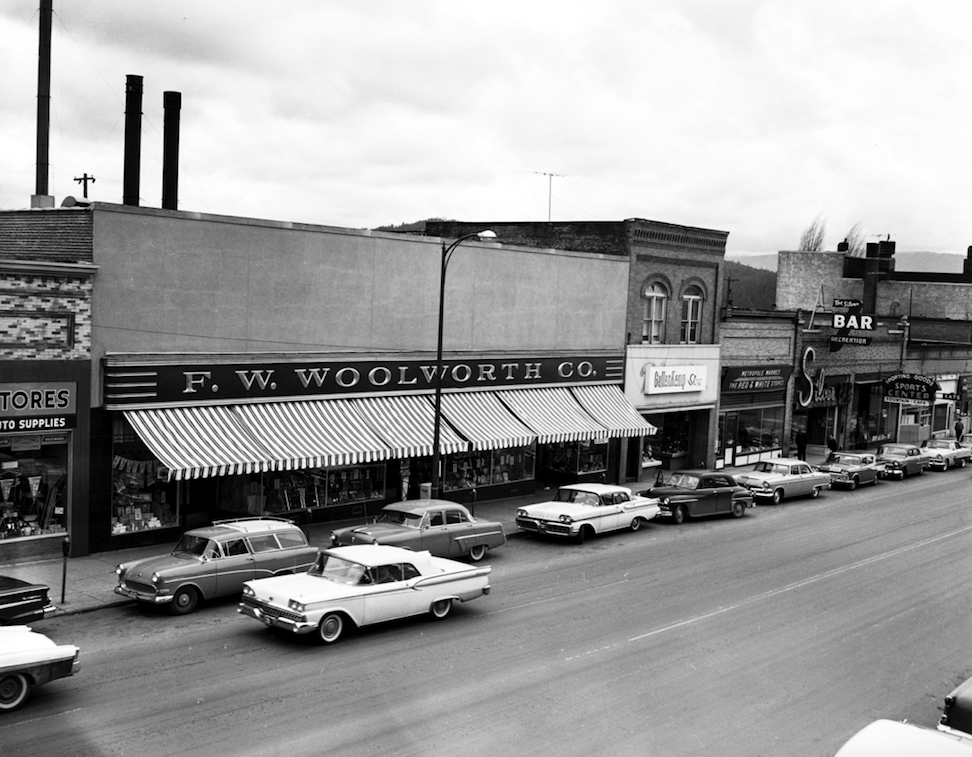By Dan Thompson | Article Provided by Coeur d’Alene Living Local
At his desk at the Museum of North Idaho, Robert Singletary shuffles loose papers into stacks, clearing a bit of space. This time of year, the museum in Downtown Coeur d’Alene is only open by appointment, but that doesn’t mean the 84-year-old is slowing down or short on work.
“The museum is closed, but this is the real stuff. It’s the part of the ship that doesn’t show,” he said. “It’s a different kind of busy.”
On an adjacent table sits a four-inch stack of copies of the Coeur d’Alene Press from the 1990s that contain history columns he wrote for the publication. The papers are organized by subject matter: timber, scouting, transportation, art, churches, towns and so on.
Next to that is a bindered manuscript of his new book, “Beautiful and Progressive: An Illustrated History of Coeur d’Alene, Idaho, 1878-1990,” which is nearing the final stages of publication. It is expected to be on sale this spring, and Singletary has been hosting a free lecture series highlighting its sections. The next will be at 7pm on January 24 at the Coeur d’Alene Public Library.
Singletary is uniquely situated to write a concise, authoritative history of the city. He has lived here since the early 1960s, teaching various courses in music, history and art over the years at North Idaho College and Lewis & Clark State College, including one on the history of the Inland Northwest. He has worked as program and marketing director for the museum since 2012.
To brush up on the town’s history before his own arrival half a century ago, Singletary read every edition of the Coeur d’Alene Press since its first publication in 1892.
“I found that nobody had written a story on the town itself, but there have been bits and pieces,” Singletary said. “So I have researched just about every book that’s been written about Coeur d’Alene, and I found that a lot of writers at the Coeur d’Alene Press wrote columns on the history of the town so I thought, OK, the only way I’m going to find out is to read every newspaper.”
Singletary grew up in rural Georgia but moved to Alaska in the 1950s, somewhat to his own surprise. A double bass player, Singletary was invited to perform at a festival in Anchorage, and while there, he met the director of a music program at a new college. It needed a history teacher, and Singletary had majored in history and in music. He took the job and ended up staying for 10 years.
Every year he would drive the 4,500 or so miles back home to Georgia, usually taking a unique route so as to see more of the country, and in doing so he visited all 48 contiguous states. That included a visit to Coeur d’Alene, and he remembers overlooking the lake from the third floor of the old Desert Hotel.
Singletary was in Alaska for the 9.2-magnitude earthquake in 1964 that is still the strongest ever recorded in North America. The fits of vertigo that plagued him after that prompted him to relocate south. North Idaho had everything he was looking for: mountains, skiing, a college in need of a music teacher and an orchestra in nearby Spokane.
Soon after he met his wife and set down roots in the community. He continues to teach private music lessons in addition to his duties through the Museum of North Idaho, which sometimes sends him into classrooms in character as local historical figures. He also started two orchestras and still is principal bass in the Panhandle Symphony Orchestra.
“I keep my antennas open. I like to keep fresh and active,” Singletary said.
But lately his primary work has been the book.
He has organized it chronologically, starting with the founding of the town in the late 1800s. Wanting to be more than just a political and economic history, he has included details about churches, music, nature, schools and other aspects of a community that are impacted when there are significant changes to those core engines.
“You see a movement and what changes took place because of that movement,” Singletary said. “And that’s what you concentrate on.”
The challenge has been to present an overview of history rather than a terribly detailed one. Either from his own experience or from the extensive reading he’s done, Singletary carries countless more stories and details in his head that couldn’t possibly fit in a concise volume.
Through the editing process, then, he has left out much of the ship that doesn’t show above water.
The book will also include hundreds of pictures, many from the collections at the museum. He doesn’t intend people to read it cover to cover like they might a novel.
“That’s one of the reason I wrote this. Most people don’t have that time, so I try to make it easy reading with a lot of photos,” Singletary said. “I like to say, I put a series of pithy paragraphs in chronological order.”
Change is a common idea in the book, Singletary said, because that’s the central force in the development of any community.
Coeur d’Alene has endured plenty of change, from the growth of the timber industry at the turn of the 20th century, to the impacts of two world wars and the growth of tourism in the 1980s.
Each gets his attention in the book as he explores the questions raised by such seismic events: What happens when your population booms with a new industry? What happens when the young men in the community are called off to war? What happens when a big resort is built on the shores of a beautiful lake?
Not one to heed the siren call of retirement, Singletary said he is far from done writing. This volume terminates at 1990, so he expects to tackle the next three decades in a subsequent volume. He also is fascinated by the growth of north Idaho’s smaller towns and the history of Kootenai County, topics that didn’t fit for this book. Again, he wanted it to be of a manageable length, not a tome.
And then, on a recent visit to Georgia, the idea came up that maybe Singletary could chronicle the history of his own hometown.
All appeal to one of his central passions: a love of local history.
“Knowing your local history is important if you want to understand what’s happening within your community,” he said. “You cannot understand thoroughly the present unless you have some grasp of what went on in the past.”


